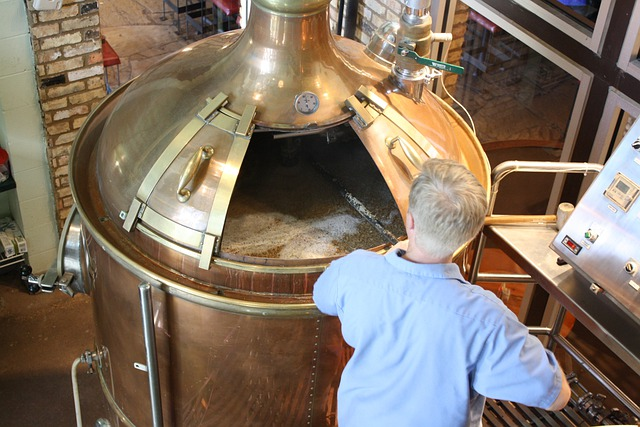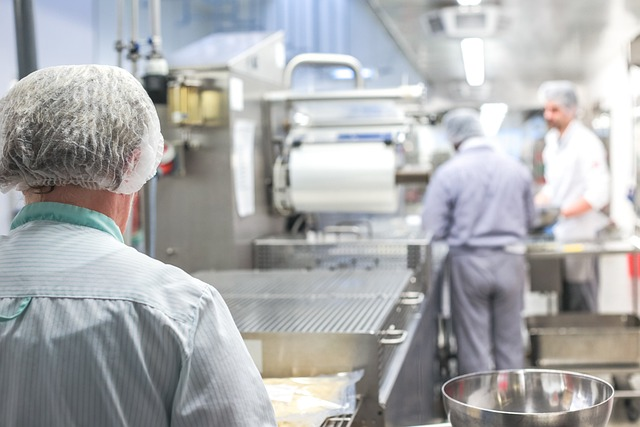
You’ve probably heard of yeast extract before, but what is it exactly? Yeast extract is a paste or powder that’s made from brewer’s yeast. It’s commonly used as a flavoring in food, and you’ll find it in brands like Marmite and Vegemite. In this guide, we’ll cover everything you need to know about yeast extract, including what it is, how it’s made, and whether or not it contains alcohol.
What is Yeast Extract?
Yeast extract is a thick, dark brown liquid that is made by breaking down yeast cells and then extracting the resulting mush. It is used as a food flavoring agent in various products, including cheese, and snacks. Yeast extract contains high levels of umami, which is why it is often used to enhance the savory flavor of foods. It can be added to soups, sauces, gravies, spreads, and savory snacks to enhance their flavor. Brands like Marmite and Vegemite are made from yeast extract.
Yeast extract production

Yeast extract is made by culturing yeast cells in a nutrient-rich solution. Once the yeast cells have multiplied, they’re harvested and heated to kill them. This step also breaks down the cell walls, releasing the flavor compounds inside. The mixture is then filtered to remove any solids, and the resulting liquid is spray-dried into a powder or concentrated into a paste.
Composition and Nutrition
Yeast extracts are nutritional powerhouses, packed with proteins, amino acids, vitamins, and minerals. They are particularly rich in B vitamins, which are crucial for energy production and overall metabolism, although they do not contain vitamin B12. One of the standout components of yeast extracts is glutamic acid, an amino acid that imparts the characteristic umami flavor, making it a popular choice for enhancing the taste of various dishes.
In addition to glutamic acid, yeast extracts are a good source of other essential amino acids like proline and glycine. These amino acids play vital roles in the body, including tissue growth and repair, hormone production, and nutrient transport across cell membranes.
Nutritionally, yeast extracts are low in calories and fat but high in protein and fiber, making them a healthy addition to many diets. They also provide a range of important minerals, such as potassium, magnesium, and iron. The exact nutritional content can vary depending on the type of yeast and the manufacturing process used, but overall, yeast extracts offer a robust profile of nutrients that can support various bodily functions.
Is Yeast Extract Alcoholic?
No, yeast extract does not contain alcohol. Alcohol is only produced during fermentation, and since the yeast cells are killed during the extraction process, they can’t produce alcohol.
Is yeast extract like MSG as a flavor enhancer?
Yeast extract is a common food ingredient that is used to add flavor. It is made by extracting the yeast cells from the fermentation process of beer or wine making, specifically from brewers yeast. These yeast cells are then dried and processed into a powder. Many people believe that yeast extract is similar to MSG, but there are some important differences between the two. MSG is a pure form of glutamate, while yeast extract contains other compounds that contribute to its flavor. In addition, MSG is added to food products to enhance their flavor, while yeast extract is often used as a replacement for salt. Yeast extract is derived from the same yeast used in the production of bread and beer, making it a versatile ingredient in various foods. As a result, while both MSG and yeast extract can be used to improve the taste of food, they are not identical.
Uses of Yeast Extracts in Food
Yeast extracts are incredibly versatile and are widely used as a food additive or flavoring agent in a variety of packaged foods. Their ability to create savory flavors and umami taste sensations makes them a popular ingredient in frozen meals, crackers, snack foods, gravies, and stocks. As a natural flavor enhancer, yeast extracts often serve as a substitute for monosodium glutamate (MSG), providing a similar taste boost without the need for synthetic additives.
Beyond packaged foods, yeast extracts have numerous culinary applications. They can add depth and a rich umami flavor to soups, stews, and sauces, elevating the overall taste profile of these dishes. They are also used as a seasoning for meats and vegetables, enhancing their natural flavors. Additionally, yeast extracts are the key ingredient in popular condiments and spreads like Marmite and Vegemite, which are beloved for their distinctive taste.
Whether you’re looking to enhance the flavor of a homemade dish or seeking a natural alternative to MSG, yeast extracts offer a versatile and flavorful solution.
Is yeast extract healthy to eat as nutritional supplements?
While there is no definitive answer to this question, yeast extract does have some potential health benefits. For one, it is made from fresh yeast, which is a good source of B vitamins, essential for energy production and metabolism. Additionally, yeast extract contains a compound called beta-glucan, which has been shown to boost the immune system. Finally, yeast extract is also a source of protein, making it a valuable addition to the diet for vegetarians and vegans. While more research is needed to confirm the health benefits of yeast extract, it does seem to be a promising food for those looking to improve their overall health.
Amino acids
Yeast extract is rich in amino acids, which are the building blocks of proteins. Yeast extract is made by breaking down the cells of yeast, a single-celled fungus. This process releases a variety of nutrients, including amino acids. Amino acids are essential for many functions in the body, including the growth and repair of tissues, the production of hormones and enzymes, and the transportation of nutrients across cell membranes.
Yeast extract is a good source of several different amino acids, including glutamic acid, proline, and glycine. These amino acids help to give yeast extract its distinctive savory taste. In addition to being a tasty food spread, it can also be a valuable source of nutrition for people who cannot get enough from other sources.
Can vegans eat yeast extract?
Veganism is a way of life that excludes all animal products, including meat, dairy, eggs, and honey. Many vegans also choose to avoid using products that are tested on animals or made with animal-derived ingredients. Because yeast extract is often derived from brewer’s yeast, it raises concerns among some consumers regarding its association with beer and alcohol. While yeast extract is not an animal product, it is often made using animal-derived ingredients such as lactose. As a result, vegans may want to avoid eating yeast extract. However, there are some vegan-friendly brands of yeast extract available on the market. Before purchasing any product, be sure to check the ingredient list to ensure that it does not contain any animal-derived ingredients.
Is Yeast Extract OK for Gluten-Free Diet?
For those adhering to a gluten-free diet due to celiac disease or gluten sensitivity, the question of whether yeast extract is safe to consume is an important one. Generally, yeast extracts are considered gluten-free because they are derived from yeast cells, which do not contain gluten. However, the potential for cross-contamination exists if the yeast extracts are processed in facilities that also handle gluten-containing grains.
To ensure safety, it’s best to choose yeast extracts that are certified gluten-free. This certification indicates that the product has been tested and meets strict standards for gluten content, minimizing the risk of cross-contamination. For individuals who are highly sensitive to gluten, even trace amounts can cause adverse reactions, so opting for certified products is crucial.
It’s also worth noting that some yeast extracts may contain other allergens, such as soy or dairy. Therefore, always check the ingredient label or consult with the manufacturer if you have any concerns about potential allergens. By taking these precautions, you can enjoy the benefits of yeast extracts without compromising your gluten-free diet.
Conclusion:
So there you have it! Everything you need to know about yeast extract. Now next time you see it on the ingredient list of your favorite food product, you’ll know exactly what it is!
